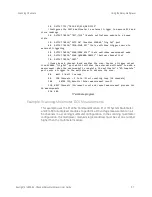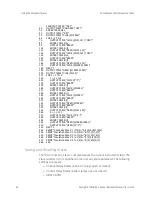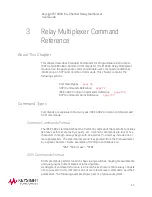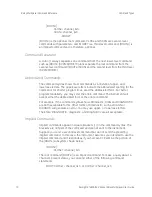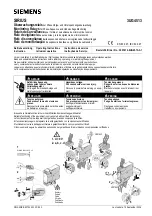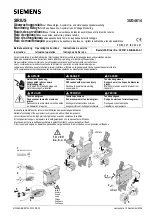
70
Keysight E1460A 64-Channel Relay Multiplexer User Guide
Relay Multiplexer Command Reference
Command Types
[ROUTe:]
CLOSe <
channel_list
>
SCAN <
channel_list
>
:MODE?
[ROUTe:] is the optional root command, CLOSe and SCAN are second-level
commands with parameters, and :MODE? is a third-level command. [ROUTe:] is
an implied command and is, therefore, optional.
Command Separator
A colon (:) always separates one command from the next lower-level command,
such as [ROUTe:]SCAN:MODE? Colons separate the root command from the
second-level command ([ROUTe:]SCAN) and the second level from the third level
(SCAN:MODE?).
Abbreviated Commands
The command syntax shows most commands as a mixture of upper- and
lowercase letters. The uppercase letters indicate the abbreviated spelling for the
command. For shorter program lines, send the abbreviated form. For better
program readability, you may send the entire command. The instrument will
accept either the abbreviated form or the entire command.
For example, if the command syntax shows DIAGnostic, DIAG and DIAGNOSTIC
are both acceptable forms. Other forms of DIAGnostic, such as DIAGN or
DIAGNOS will generate an error. You may use upper- or lowercase letters.
Therefore, DIAGNOSTIC, diagnostic, and DiAgNoStIc are all acceptable.
Implied Commands
Implied commands appear in square brackets ([ ]) in the command syntax.
The
brackets are not part of the command and are not sent to the instrument.
Suppose you send a second-level command but do not send the preceding
implied command. In this case, the instrument assumes you intended to use the
implied command and it responds as if you had sent it. Examine the portion of
the [ROUTe] subsystem shown below:
[ROUTe:]
CLOSe? <
channel_list
>
The root command [ROUTe:] is an implied command. To make a query about a
channel’s present status, you can send either of the following command
statements:
ROUT:CLOSe? <
channel_list
> or CLOSe? <
channel_list
>


